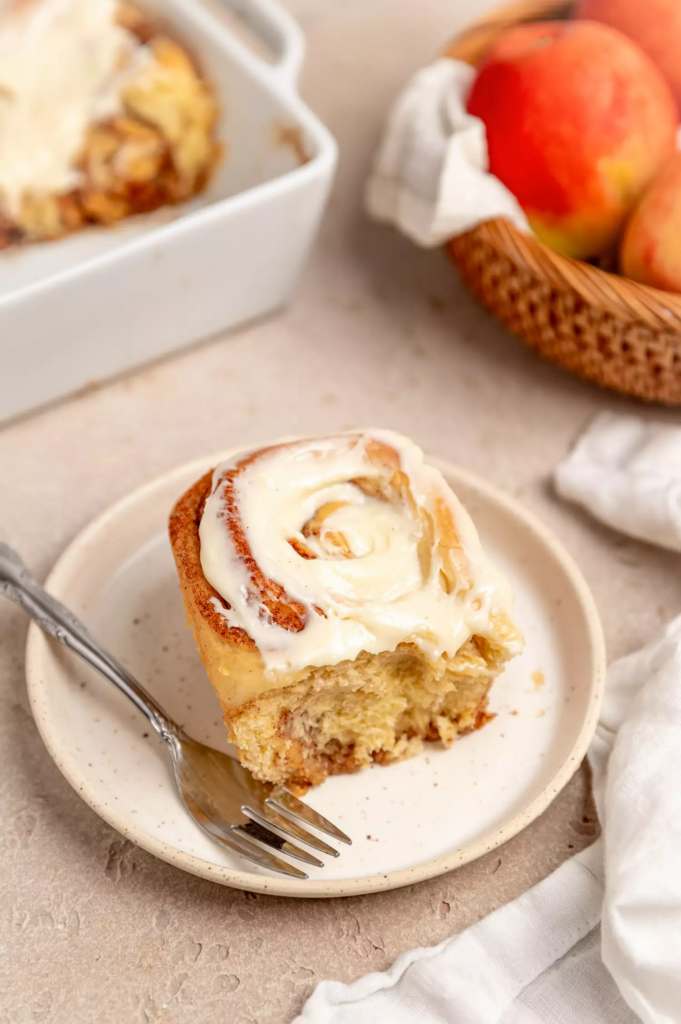Pepperoni Rolls

Pepperoni Rolls
- Total Time: 1 hour
Description
If you grew up eating pepperoni rolls like I did, you know you are lucky. My mother would occasionally buy a few from Brownie Bakery, and as a latchkey kid I’d come home after school and work my way through one while watching reruns of The Flintstones. I deliberately removed the pepperoni, savoring that first. Then I’d slowly nibble the soft white dough that had surrounded it—a halo of grease from the pepperoni rendered into the roll, staining its center reddish orange. It was the best way I’ve ever ruined my dinner.
When I moved two hours north, away from the Ohio River Valley, I was shocked to learn pepperoni rolls are not universal. They are, in fact, highly regional, with a fascinating origin story. Familiarity with pepperoni rolls indicates you’re from northeast Appalachia, but they’re so good that it’s a shame for them to remain confined to this area. Wherever you live, you deserve pepperoni rolls. Consider this your primer.
What Are Pepperoni Rolls?
As the name suggests, pepperoni rolls are cottony white dinner rolls baked with pepperoni inside. One pepperoni roll makes an ideal snack; two, a satisfying lunch.
But there’s much more to pepperoni rolls. They’re a sense of identity. Pepperoni rolls came about in the early 20th century, when Italian American immigrants were some of the many immigrant groups who came to West Virginia to work in the coal mines. Though former coal miner Giuseppe “Joseph” Argiro is often credited with producing the first commercial pepperoni roll at his bakery in 1920 in Fairmont, West Virginia, it’s possible he himself did not generate the idea. In The West Virginia Pepperoni Roll (required reading for any bookish pepperoni roll fanatic), author Candace Nelson writes, “It is likely the first creators of the pepperoni roll were home cooks–wives, in particular, of coal miners looking to fill coal miner’s bellies.”
Imagine having a grueling job in a dangerous, dark, dirty place. You work long hours in cramped conditions. Now imagine having a greasy, salty bundle of puffy carbs to look forward to. It’s a food that was designed to hit the most basal pleasures in the most trying of conditions.
This is why pepperoni rolls are hard-wired in the emotional DNA of people in the Ohio River Valley. Pepperoni rolls are so beloved in West Virginia that the state legislature made them the official state snack food. I have a pepperoni roll pin. Homesick Mountain State expats can order real West Virginia pepperoni rolls from Goldbelly.
Or just make your own. After one bite, you’ll know what the fuss is about.
It’s Always the Right Time for Pepperoni Rolls
When is the best time to eat a pepperoni roll? Anytime you feel like it! Around here, they’re part of the fabric of daily life, yet each time you have one, it’s a special occasion.
You can buy pepperoni rolls at mom-and-pop bakeries, grocery store delis, and convenience stores. People also bring homemade pepperoni rolls to parties and potlucks. My friends served sourdough pepperoni rolls at their wedding. Schools sell them for fundraisers. With this recipe, you, too, can bake pepperoni rolls with love to transform your day into a special occasion.
Ingredients
1/4 cup warm water
1 (.25-ounce) package (2 1/4 teaspoons) active dry yeast
3 1/2 cups (451g) all-purpose flour, divided, plus more if needed
1 teaspoon salt
8 tablespoons (113g) unsalted butter, divided
2 tablespoons honey
3/4 cup buttermilk
1 large egg
8 to 9 ounces (about 144 slices) thinly sliced pepperoni
Instructions
Proof the yeast and measure the flour:
In a small bowl, place 1/4 cup warm water and sprinkle the yeast over it. Let it sit until dissolved and creamy, about 5 minutes.
Meanwhile, in a large mixing bowl, combine 3 cups (387g) flour and salt.
Melt the butter, then add the milk, honey, and egg:
In a small saucepan, melt 4 tablespoons butter over medium-low heat. Whisk in the honey and buttermilk, and heat just until warm to the touch (do not boil). Remove from heat and whisk in the egg.
Make the dough:
Add the water and yeast mixture to the flour, along with the buttermilk mixture. Mix with a wooden spoon until the dough just comes together. At first it will be quite sticky. If needed, add the remaining 1/2 cup (64g) flour, bit by bit. Resist the temptation to add a lot of flour; you want a soft dough that’s still kneadable.
Transfer to a clean counter and gently knead by hand until smooth and supple, about 5 minutes. I don’t need to flour my counter—if the dough sticks, it needs more flour. Place the dough in a large, greased bowl, cover, and let rise on your counter until doubled in bulk, 1 to 2 hours.
Preheat the oven to 350°F:
Position racks in the upper and lower thirds and line two baking sheets with parchment.
Divide the dough and prep for baking:
Divide the dough into 12 equal pieces and let them rest on a lightly floured surface for 10 minutes.
Melt the remaining 4 tablespoons of butter. Divide the pepperoni into 12 roughly equal piles.
Form the rolls, then let them rise:
Take a piece of dough and pat it into a square roughly 4 to 5 inches across. Imperfection is totally acceptable here, and in fact slightly preferable. Shingle the pepperoni slices over the square, leaving a 1/4-inch border around the dough. Roll up the dough and firmly pinch the bottom seam to seal. Place it seam-side-down on the baking sheet. Repeat with the remaining dough. You’ll wind up with 6 rolls per sheet.
Brush the rolls with half of the melted butter. Cover each baking sheet with a clean dish towel and let rise for 30 minutes. The rolls will not puff up visibly.
Bake the rolls and serve:
Bake until lightly browned, 30 to 40 minutes, rotating the sheets from top to bottom and back to front halfway through baking. Immediately after removing from the oven, brush with the remaining butter—you may need to rewarm the butter slightly before brushing.
Serve warm or at room temperature. Keep the cooled rolls at room temperature in a tightly sealed plastic bag or wrapped in plastic wrap for up to 3 days.
To freeze the baked rolls, cool completely. Wrap each roll in plastic wrap, then in foil, and then pop the individually wrapped rolls in a zip top storage bag. Freeze for up to 1 month. Thaw on the counter and, for the best eating experience, warm in a microwave for 15 to 30 seconds before eating.
Notes
N/A
- Prep Time: 20 mins
- Cook Time: 40 mins





